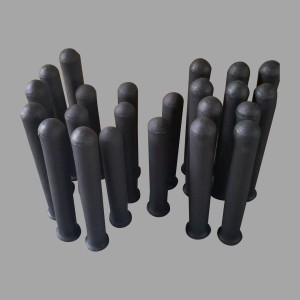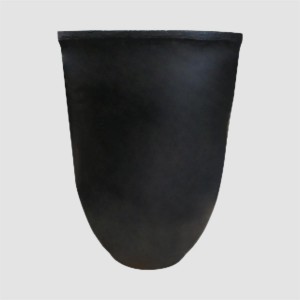Best Crucible For Copper
Features

Graphite silicon carbide crucible product features
Graphite silicon carbide crucible is a special container used for high-temperature metal smelting. It has the following unique characteristics:
1. High heat resistance: Graphite silicon carbide material has excellent high temperature resistance and can withstand temperatures above 1,600 degrees Celsius.
2. Excellent thermal conductivity: Graphite silicon carbide material has excellent thermal conductivity, which can achieve rapid and uniform heat transfer, thereby improving smelting efficiency.
3. Strong corrosion resistance: Graphite silicon carbide has good resistance to chemicals such as acids and alkalis, extending the service life of the crucible.
4. High mechanical strength: Even at high temperatures, graphite silicon carbide crucible can still maintain its structural strength and is not easily deformed or damaged.
5. Good stability: During the high-temperature smelting process, graphite silicon carbide crucible maintains excellent chemical and physical stability to prevent reaction with molten metal.
Temperature conditions for melting brass
Brass is an alloy of copper and zinc that typically melts in the temperature range of 900 to 950 degrees Celsius. This temperature range requires precise control to ensure the quality and consistency of molten brass. Temperature that is too high or too low will affect the smelting process and lead to unstable product quality.
Things to note when melting brass
1. Temperature control: The temperature must be strictly controlled when smelting brass to avoid adverse effects on its quality due to too high or too low temperature.
2. Fire management: During the smelting process, the flame should be avoided from direct contact with the crucible surface, and sudden changes in the fire intensity should be prevented to avoid the crucible rupture due to excessive temperature changes.
3. Clean up in time: After each smelting, the remaining materials in the crucible should be cleaned up in time to prevent accumulation and affect subsequent use.
4. Avoid acidic liquids: The crucible should not be immersed in acidic liquids for a long time to avoid corrosion of the crucible material.
Service life of graphite silicon carbide crucible for smelting brass
When used and maintained correctly, graphite silicon carbide crucibles have a relatively long service life. However, due to the impact of high temperatures and chemical reactions, its lifespan is limited. If the crucible shows signs of damage or aging, it should be replaced in time to ensure the safety and efficiency of the smelting process.









